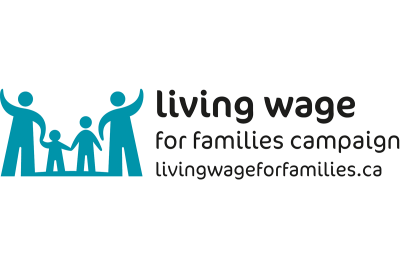By Halena Seiferling, Living Wage for Families Campaign Organizer
There's a popular phrase that Canadians and Americans in this part of the world like to repeat: West Coast, Best Coast. Those of us in the Pacific Northwest - an area known for mild weather and beautiful mountain and ocean landscapes - take pride in the high quality of life we feel this place offers.
But what is the quality of life like for low-income Pacific Northwesterners? Here in British Columbia, Canada's westernmost province, it turns out things are often not so excellent. At the BC-based Living Wage for Families Campaign, we calculate living wages for regions across the province and certify Living Wage Employers that operate here, and we know that many of our neighbours are still struggling to make ends meet.
We use the same methodology and definition for the living wage as the Living Wage Foundation and other campaigns around the world. We define the living wage as the hourly amount that each of two working parents with two young children must earn to afford a decent quality of life in their community (including rent, child care, food and transportation) once provincial and federal government taxes, credits, deductions and subsidies are taken into account. Our living wages are re-calculated each spring. We work with the BC Office of the Canadian Centre for Policies Alternatives, a research institute here in Canada, as well as local partners across the province.
This year, all our living wages decreased from 2018 due to our provincial government's investments into child care. While costs continue to increase steeply for many family expenses, the Province recently introduced two new child care programs. One is a benefit paid to families with children based on their income, and one is a universal benefit paid to licensed child care providers to help keep their fees lower. Taken together, these savings offset the increased cost of living for the living wage family this year.
For example, let's look at Metro Vancouver, which is the region surrounding Vancouver, BC's largest city. The region collectively is home to nearly 2.5 million people. The 2019 living wage for Metro Vancouver is $19.50 per hour, down from $20.91 in 2018. Without the provincial government's child care investments, the 2019 living wage would have been $22.47 per hour - a shocking 7.5% increase over the 2018 living wage.
But while the living wages are lower in 2019, much still needs to be done. The provincial minimum wage is $13.85 per hour - a gap of $5.65 per hour compared to the Metro Vancouver living wage. Rent continues to be the most expensive item in the living wage budget and vacancy rates remain near-prohibitively low in most BC communities. Many families struggle with long wait lists for child-care spaces, or no accessible spaces at all, and the cost is still too high for many families. The cost of items like food and transportation will continue to increase as our province faces more and greater impacts of climate change. And what's more, the living wage methodology captures only one family type; we know that seniors, single people and families with younger children or teenagers are still experiencing greater challenges.
Without sustained public investment in key family expense areas, the living wage decline in 2019 will be short-lived and families will continue to struggle. In addition to calculating living wages, we do advocacy to the provincial government to put more public investment into areas like housing, child care and transportation to ensure that costs remain reasonable for working families. There is much that governments can do to incentivize businesses and service providers and to keep the cost of living from increasing too rapidly year to year.
Until then, we are very happy to have certified more than 160 Living Wage Employers here in BC which represents over 20,000 workers being paid a living wage. This includes ten local governments and one school district that have passed living wage policies, as well as diverse employers ranging from small family businesses to large private companies to co-operatives and non-profit organizations. These employers are showing that it's possible to pay staff fairly, to find contractors and service providers that pay fairly, and to invest in their communities, regardless of their sector or industry.
In the coming year we will continue to expand our work by reaching out to more employers, working with more local governments, and advocating more to our provincial government. We have built a strong and positive campaign to ending working poverty in our corner of the world, and we have done so by listening to the voices of employers, workers, unions, community organizations, and governments, as well as other living wage networks across our country and beyond. We all have a role to play in this work, and it's only by working together that we can further strengthen our collective campaign and build a global movement for fair wages and dignified work.

